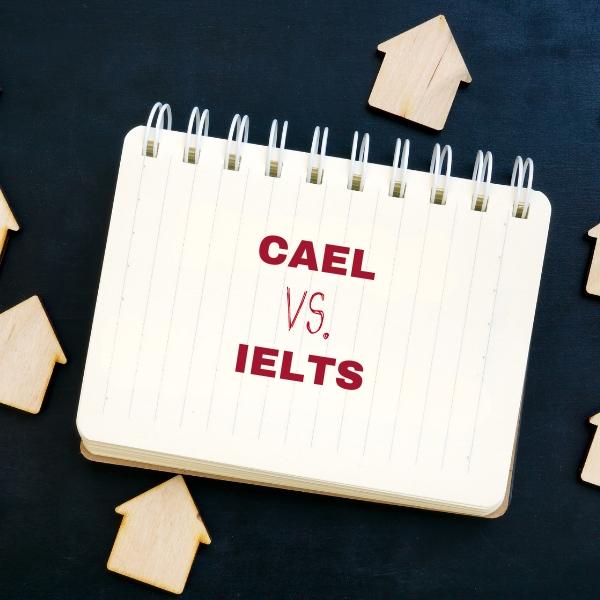CAEL vs IELTS - Which Test Offers a Better Reflection of Your Language Skills

Strong 8k brings an ultra-HD IPTV experience to your living room and your pocket.
In the realm of English proficiency testing, two exams often stand out: the Canadian Academic English Language (CAEL) test and the International English Language Testing System (IELTS). Both are widely recognized and accepted for academic, immigration, and professional purposes. However, each test has its unique characteristics, formats, and areas of focus. This article provides a comprehensive comparison of the CAEL and IELTS tests, examining their purposes, test formats, the skills they assess, and which test might offer a better reflection of your language skills.
Purpose of CAEL and IELTS
CAEL
The CAEL test is primarily used for academic purposes, particularly for admission into Canadian universities and colleges. It is designed to measure the English language proficiency of students who plan to study in an English-speaking academic environment in Canada.
IELTS
The IELTS test serves multiple purposes:
Academic: For those seeking admission into English-speaking universities worldwide.
General Training: For immigration, work, and training programs in English-speaking countries.
Professional Registration: For professionals who need to demonstrate their English proficiency to practice in an English-speaking country.
Test Formats
Both the CAEL and IELTS tests evaluate four core language skills: Listening, Reading, Writing, and Speaking. However, their formats differ significantly.
CAEL Test Format
The CAEL test consists of integrated tasks that mimic real-world academic situations. It is delivered entirely on a computer and includes the following sections:
Speaking (7-10 minutes): This section requires test-takers to respond to a series of questions related to everyday and academic topics. Responses are recorded via a computer.
Reading (35-50 minutes): In this section, candidates read academic texts and answer a variety of question types, such as multiple-choice, matching, and short answer.
Listening (25-35 minutes): Test-takers listen to academic lectures and conversations and then answer related questions.
Writing (40-70 minutes): The writing section includes tasks that require the candidate to write responses based on the reading and listening materials provided during the test.
The integrated nature of the CAEL test means that it often combines reading, listening, and writing tasks, closely mirroring the academic tasks students will encounter in a university setting.
IELTS Test Format
The IELTS test is offered in two versions: Academic and General Training. Both versions assess the same language skills but differ in content and context. Here is the breakdown of the Academic version:
Listening (30 minutes): This section includes four recorded monologues and conversations. Test-takers answer a series of questions, including multiple-choice, matching, and completion tasks.
Reading (60 minutes): The reading section consists of three long texts taken from books, journals, magazines, and newspapers. Questions include multiple-choice, identifying information, matching information, and sentence completion.
Writing (60 minutes): The writing section comprises two tasks. Task 1 requires candidates to describe visual information (e.g., graphs, charts). Task 2 involves writing an essay in response to an argument or problem.
Speaking (11-14 minutes): The speaking section includes a face-to-face interview with an examiner, divided into three parts: introduction and interview, individual long turn, and a two-way discussion.
Skills Assessed
Both tests assess the same core skills but approach them differently, reflecting their specific purposes.
Listening
CAEL: Focuses on academic listening skills, such as understanding lectures and classroom discussions.
IELTS: Includes a broader range of listening scenarios, from everyday conversations to academic lectures, especially in the Academic version.
Reading
CAEL: Emphasizes reading academic texts and integrating information from multiple sources.
IELTS: Tests reading comprehension through a variety of text types, with a focus on academic texts in the Academic version.
Writing
CAEL: Integrates writing tasks with reading and listening components, reflecting the type of assignments encountered in academia.
IELTS: Includes distinct tasks, such as interpreting data in Task 1 and constructing arguments or discussions in Task 2.
Speaking
CAEL: Involves responding to questions via a computer, focusing on academic and everyday topics.
IELTS: Features a live interview, assessing the ability to engage in conversation, present information, and discuss complex issues.
Reflection of Language Skills
Real-World Application
• CAEL: The integrated format of the CAEL test is highly reflective of real-world academic environments. It simulates tasks such as synthesizing information from lectures and readings to write essays or reports, mirroring the demands of university coursework.
• IELTS: Offers a comprehensive evaluation of English proficiency across various contexts, making it versatile for both academic and non-academic purposes. The face-to-face speaking component provides a realistic measure of conversational skills.
Academic Preparedness
• CAEL: Specifically designed for academic settings, the CAEL test's focus on integrated tasks provides a realistic measure of a student's ability to handle the types of assignments and interactions they will face in a university environment.
• IELTS: While also suitable for academic settings, IELTS tests each skill separately. This might be advantageous for those who excel in specific areas but less so in integrating multiple skills simultaneously.
Skill Integration
• CAEL: The integration of skills in CAEL can better reflect a test-taker's ability to perform complex academic tasks that require the use of multiple skills simultaneously. This integration is beneficial for academic preparedness.
• IELTS: By testing each skill independently, IELTS allows for a clear assessment of each area of proficiency. This can be particularly useful for identifying specific strengths and weaknesses.
Choosing the Right Test
Considerations for CAEL
• Academic Focus: If your primary goal is to study at a Canadian university, CAEL is designed with this specific context in mind.
• Integration of Skills: If you prefer tasks that require synthesizing information from various sources, CAEL's integrated approach may be beneficial.
• Computer-Based Test: CAEL is fully computer-based, which might be a factor if you are comfortable with digital tests.
Considerations for IELTS
• Versatility: IELTS is globally recognized for multiple purposes, including immigration, employment, and education. It might be the better choice if you need a test that serves more than one purpose.
• Face-to-Face Speaking: The live interview in the IELTS Speaking test can be a more accurate reflection of your conversational skills in English.
• Separate Skill Assessment: If you prefer to demonstrate your abilities in each skill area independently, IELTS's format will allow you to do so.
Both the CAEL and IELTS tests offer valid assessments of English language proficiency, but they cater to different needs and preferences. CAEL's integrated, academically-focused format provides a realistic reflection of the tasks encountered in a Canadian university setting. In contrast, IELTS offers a versatile assessment applicable to a variety of contexts, with a comprehensive evaluation of individual language skills.
Choosing the right test depends on your specific goals and the contexts in which you plan to use your English proficiency. Consider the structure, focus, and recognition of each test to determine which one aligns best with your needs. Whether you opt for CAEL or IELTS, thorough preparation and understanding of the test format will be crucial to achieving your desired results.
Note: IndiBlogHub features both user-submitted and editorial content. We do not verify third-party contributions. Read our Disclaimer and Privacy Policyfor details.


